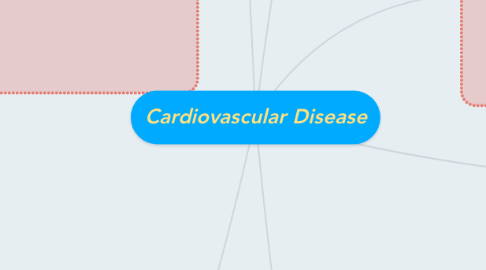
1. Stakeholders
1.1. Intended Users of CVD Research Findings
1.1.1. Partners
1.1.2. Funding Agencies
1.1.3. Coalition Members
1.1.4. General Public
1.2. Those Served/Affected by CVD Programs
1.2.1. Patients/Clients
1.2.2. Advocacy Groups
1.2.3. Community Members
1.2.4. Elected Officials
1.3. CVD Prevention Programs
1.3.1. Management
1.3.2. Program Staff
1.3.3. Partners
1.3.4. Funding Agencies
1.3.5. Coalition Members
1.4. Local
1.4.1. CVD Coalitions
1.4.2. Health Departments
1.4.3. Schools
1.4.4. Privately-owned Businesses
1.4.5. Healthcare Systems/Medical Community
1.4.6. Religious Organizations
1.4.7. Private Citizens
1.4.8. Those Living with CVD
1.4.9. Advocacy Partners
1.5. State
1.5.1. CVD Coalitions
1.5.2. Advocacy Partners
1.5.3. State Health Department
1.5.4. State Education Agencies
1.5.5. Academia and Research Partners
1.5.6. Privately-owned Businesses
1.5.7. Healthcare Systems
1.5.8. Religious Organizations
1.6. National
1.6.1. National Advocacy Partners
1.6.2. Government Agencies
1.6.2.1. Center for Disease Control and Prevention
1.6.2.2. CDC National Center on Birth Defect and Developmental Disabilities
1.6.2.3. Agency for Toxic Substances and Disease Registry
1.6.2.4. Food and Drug Administration
1.6.2.5. U.S. Department of Labor
1.6.2.5.1. Occupational Safety and Health Administration
1.6.2.5.2. Bureau of Labor Statistics
1.6.2.5.3. Mine Safety and Health Administration
1.6.2.6. National Institutes of Health
1.6.2.7. U.S. Department of Agriculture
1.6.2.8. U.S. Department of Justice
1.7. International
1.7.1. World Health Organization
1.7.2. Pan American Health Organization
2. Other Problems Associated with CVD
2.1. Neurological
2.1.1. Decreased Consciousness
2.1.2. Cramping of Extremeties
2.1.3. Confusion
2.1.4. Weakness
2.1.5. Dizziness
2.2. Nutritional
2.2.1. Obesity
2.2.2. Anorexia and Malnutrition
2.3. Endocrine
2.3.1. Diabetes
2.4. Pulmonary
2.4.1. Pulmonary Edema
2.4.2. Pulmonary Emboli
2.4.3. Dyspnea
2.4.4. Dry, Hacking Cough
2.4.5. Orthopnea
2.5. Gastrointestinal
2.5.1. Constipation
2.5.2. Nausea
2.5.3. Abdominal Distention
2.5.4. GI Bloating
2.5.5. Enlarged Liver
2.5.6. Ascites
2.6. Genital/Urinary
2.6.1. Nocturnal Diuresis
2.6.2. Sexual Dysfunction
2.6.3. Urinary Bladder Incontinence
2.7. Immunologic
2.7.1. Increased Risk of Infection
2.8. Musculoskeletal
2.8.1. Decreased Activity Tolerance
2.8.2. Decreased Mobility
2.8.2.1. Unsteady Gait
2.8.2.2. Dyspnea
2.8.2.3. Fatigue
2.8.3. Decreased Elasticity of Smooth Muscles
2.8.4. Peripheral Edema
2.8.4.1. Feet
2.8.4.2. Ankles
2.8.4.3. Legs
2.8.4.4. Belly
2.9. Psychosocial
2.9.1. Disturbed Body Image
2.9.2. Lack of Social Function
2.9.2.1. Activity Intolerance
2.9.3. Anxiety
2.9.3.1. Fear of Death
3. Social Determinants
3.1. Income and Social Status
3.2. Social Support Networks
3.3. Education
3.4. Employment and Working Conditions
3.4.1. Physical Hazards
3.4.1.1. Extreme Hot or Cold Temperatures
3.4.1.2. Prolonged Exposure to Noise
3.4.2. Chemical Hazards
3.4.2.1. Carbon Disulfide
3.4.2.2. Carbon Diozide
3.4.2.3. Lead
3.4.3. Psychosocial Hazards
3.4.3.1. Job Strain
3.5. Physical Environment
3.5.1. Stress
3.5.1.1. Metabolic Syndrome
3.6. Personal Health Practices and Coping Methods
3.7. Healthy Child Development
3.8. Heath Services and Access to Care
3.8.1. Treatment Gaps
3.8.1.1. Patients Not Reciving Correct Treatment
3.8.1.2. Lack of Healthcare Providers
3.8.1.3. Budgetary Constraints
4. Types of CVD
4.1. Coronary Artery Disease
4.1.1. Hearth Attack
4.1.2. Atherosclerosis
4.2. Ischemic Stroke
4.3. Heart Failure
4.4. Arrhythmia
4.5. Heart Valve Problems
4.5.1. Stenosis
4.5.2. Insufficiency/Regurgitation
4.6. Hypertension
4.6.1. Essential
4.6.2. Aquired
4.7. Aneurysm/Dissection
4.8. Congenital Heart Disease
4.8.1. Tetralogy of Fallot
4.8.2. Atrial Septal Defect
4.8.3. Transposition of Great Arteries
4.8.4. Coarctation of the Aorta
4.8.5. Pulmonary Stenosis
4.8.6. Ventricular Septal Defect
4.8.7. Patent Ductus Arteriosis
4.8.8. Aortic Stenosis
5. Risk Factors
5.1. Family History
5.2. High Cholesterol Level
5.3. Smoking
5.4. Obesity
5.5. Sedentary Lifestyle
6. Treatment
6.1. Drugs
6.1.1. Aspirin
6.1.2. Nitrates
6.1.3. Beta Blockers
6.1.4. Calcium Channel Blockers
6.1.5. Ace Inhibitors
6.1.6. Statins
6.1.7. Etc.
6.2. Stress Reduction
6.3. Low Fat, Low Sodium Diet
6.4. Smoking Cessation
6.5. Exercise
6.6. Surgery
6.6.1. Coronary Artery Bypass Grat
6.6.2. Angioplasty
6.6.3. Atherectomy
6.6.4. Heart Transplant
6.6.5. Valve Replacement
6.6.6. Aorta Replacement
6.6.7. Congenital Heart Defect Surgery
